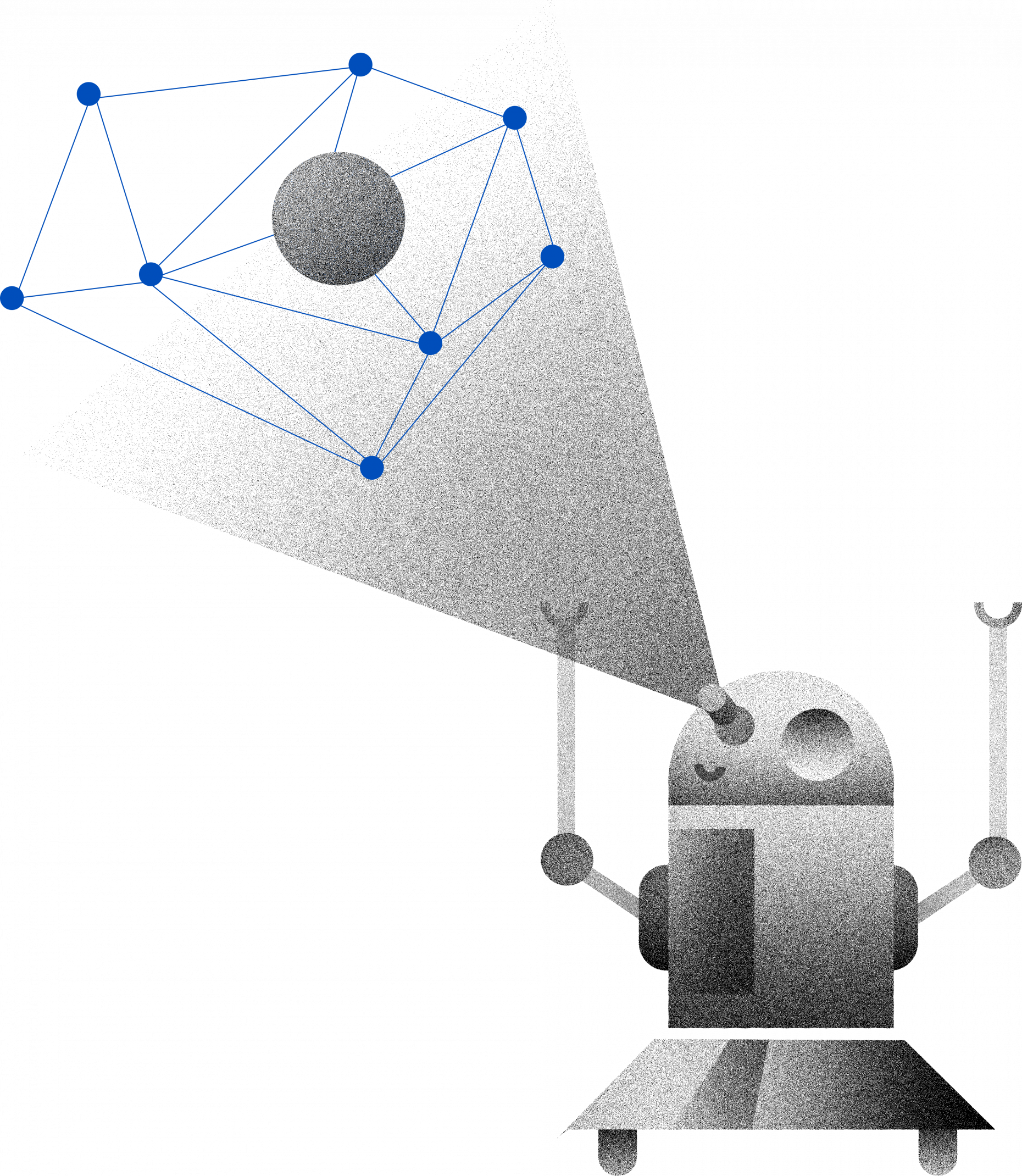
ROBOT
Humanoid robots communicating with people, robot arms in the manufacturing industry, and self-driving cars are probably the most prominent examples of AI applications.
But a robot capable of fulfilling even a very straightforward task is usually a result of a mixture of the most advanced AI techniques. The courses in this block are devoted to these techniques.
For robots and computers, a picture taken by a camera is just a pile of numbers. Computer vision is a subfield of AI that helps to identify real objects in these vast piles of numbers, their size, and precise position. The Autonomous Robotics course covers all essentials to make robots capable of performing various tasks autonomously. It discusses planning, RGB-D sensors, simultaneous localization and mapping (SLAM) and necessary pieces of machine learning. During the labs, student groups work with TurtleBots2 which are equipped with sensors and computational power. The basic tools are ROS and Python. The other course, AI in robotics, focuses on planning approaches and decision-making techniques for solving problems arising in autonomous robotic systems. The primary tool used in laboratory exercises is, again, the Python programming language. Besides, the students might tackle the Robot Operating System (ROS – https://www.ros.org/) and implement the tasks using C/C++ to become familiar with the real-world deployment of the created solutions.
Courses
-
Artificial Intelligence in Robotics
FEE CTU (Winter)
-
Autonomous Robotics
FEE CTU (Summer)
STILL SOME QUESTIONS?
Contact us at minor@prg.ai and we will get back to you shortly.
Also, don’t forget to follow us on LinkedIn.
-
FEE CTU
-
FIT CTU
-
FSV CUNI
-
MFF CUNI